Deafinity
The doorbell for people with impaired hearing
Motivation
A doorbell for deaf individuals or those with hearing disabilities can greatly improve their daily lives by providing an alternative method of notification when someone is at the door. This can be especially useful for those who may not always be able to hear a traditional doorbell or may not have someone with them at all times to assist them.
Having various LED devices or vibrating devices placed around the house allows the homeowner to be notified in any room they may be in, rather than being limited to the sound of a doorbell which may not always be audible to them. This gives deaf or hard-of-hearing individuals more independence and allows them to feel more confident in answering the door on their own.
Additionally, a doorbell for deaf individuals or those with hearing disabilities can provide a sense of security by alerting the homeowner to someone at the door, even if they are not able to hear the doorbell. It can also be a useful tool for those who may receive frequent visitors and need an easy way to know when someone has arrived.
Overall, a doorbell for deaf individuals or those with hearing disabilities can significantly improve their quality of life by providing an accessible and convenient way to be notified of visitors at their door.
Using a Raspberry Pi for the Deafinity project can be a good choice for several reasons:
Cost: Raspberry Pi boards are relatively inexpensive, making them a cost-effective solution for the Deafinity project.
Versatility: The Raspberry Pi is a versatile computer that can be used for a wide range of projects. This makes it a good choice for the Deafinity project as it can potentially be repurposed for other uses in the future.
Connectivity: The Raspberry Pi has built-in Ethernet and WiFi connectivity, making it easy to connect to the internet and other devices. This can be useful for the Deafinity project as it may need to send notifications or signals to various devices around the house.
Community: The Raspberry Pi has a large and active community of users and developers, meaning there is a wealth of knowledge and resources available for those working on the Deafinity project using the platform.
Peripherals: The Raspberry Pi has many peripherals available, including LED displays, sensors, and motors, which can be used in the Deafinity project to provide notifications or signals to the homeowner.
Overall, the Raspberry Pi is a good choice for the Deafinity project due to its low cost, versatility, connectivity, and availability of peripherals and community resources.
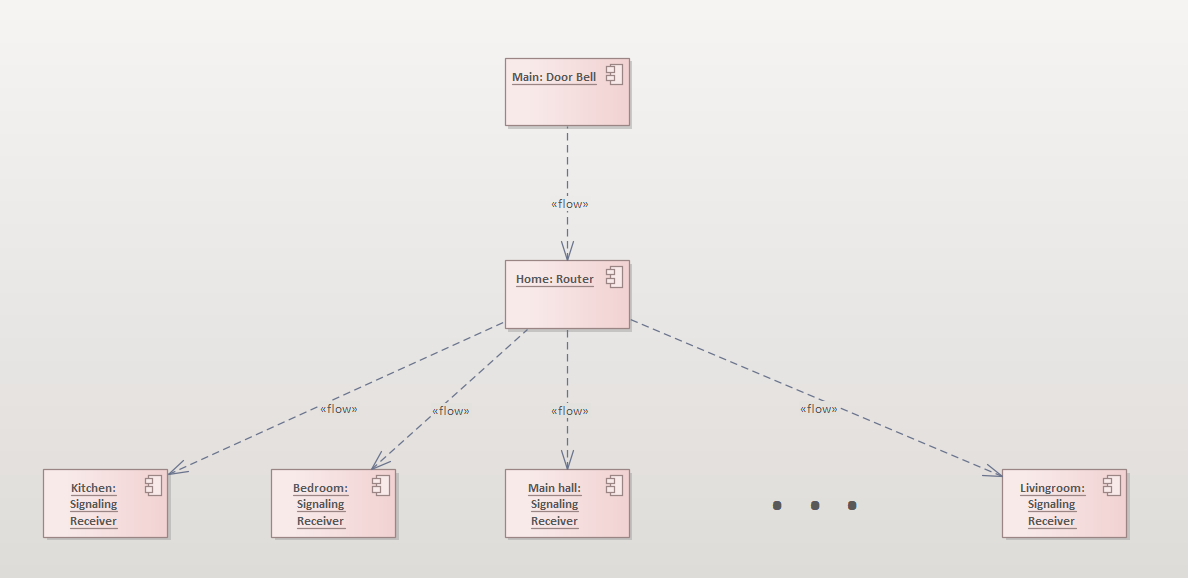
3D Printing
The Deafinity project has used 3D printing to create two custom boxes: one to house the doorbell button and one to house the LED notification device. These 3D-printed boxes allow for a customized and tailored fit for the specific components used in the Deafinity project. The project required custom boxes to house the doorbell button and LED notification device, and 3D printing allowed for the creation of these tailored and precise fits.
In addition, 3D printing was useful for prototyping in the Deafinity project. It allowed for the creation of prototypes of the custom boxes and other parts, enabling the testing and iteration of different designs before committing to a final version.
Incorporating hinges into the 3D-printed boxes for the Deafinity project allowed for easy access to the electronic components inside while also providing a secure closure. This was made possible through the use of 3D printing, which allowed for the creation of these custom boxes in a single print.
In addition, 3D printing allowed for the precise and accurate placement of the hinges on the boxes, ensuring that they functioned smoothly and effectively. This added a level of convenience and ease of use to the Deafinity project, as the boxes could be easily opened and closed as needed.
Overall, the use of 3D printing in the Deafinity project allowed for the creation of custom boxes with hinges in a single print, enabling a convenient and secure method of accessing the electronic components inside. This proved to be a valuable and effective use of 3D printing in the development of the project.
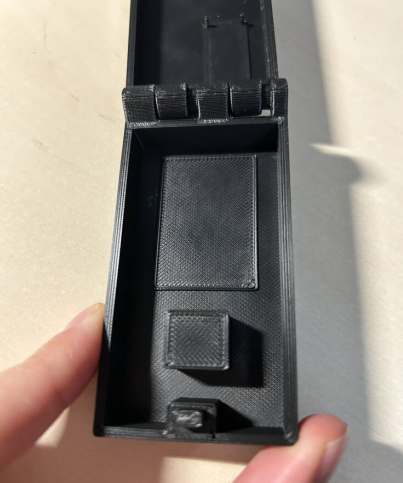
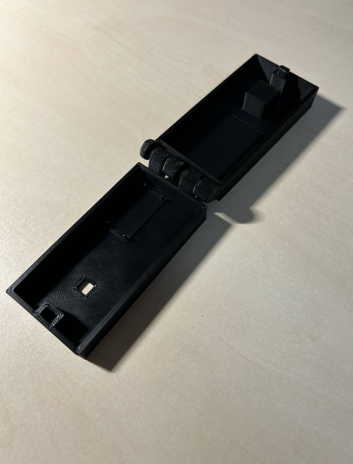

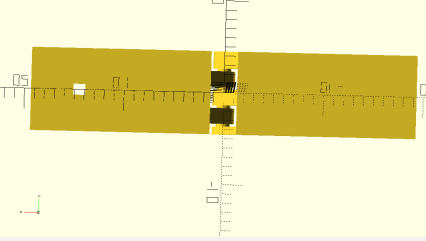

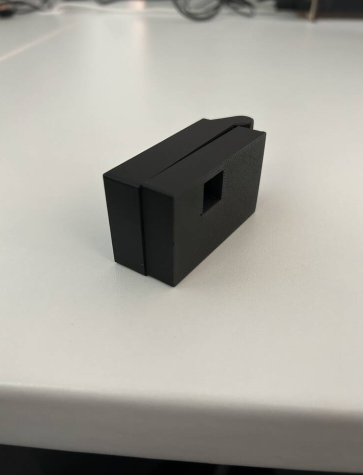


Assembly
Doorbell
The doorbell component of the Deafinity project consists of a Raspberry Pi, a battery case, and a mechanical keyboard key housed in a 3D-printed box. These components were assembled as follows:
First, the Raspberry Pi and battery case were placed inside the 3D-printed box. Mounting brackets or other securing methods were used to hold these components in place inside the box.
Next, the mechanical keyboard key was mounted onto the exterior of the box, serving as the doorbell button. The keyboard key was then connected to the Raspberry Pi using the appropriate wiring and connections, allowing the doorbell button to trigger the Raspberry Pi when pressed.
Finally, the box was closed and secured, making sure that all components were securely in place and that the doorbell button was easily accessible from the outside.
Overall, the doorbell component of the Deafinity project was assembled by placing the necessary electronic components inside a 3D-printed box, connecting them, and securing the box to ensure everything was in place and functional.
Signal box
The LED signal box for the Deafinity project is comprised of a Raspberry Pi, battery case, breadboard, and LED, all housed inside a 3D-printed box. These components were assembled in the following manner:
The Raspberry Pi and battery case were placed within the 3D printed box and secured in place using mounting brackets or other methods. The breadboard was then connected to the Raspberry Pi using the appropriate wiring and placed inside the box. This allowed the Raspberry Pi to control the LED.
The LED was placed in the designated hole on the exterior of the box and connected to the breadboard using the appropriate wiring. The box was then closed and secured, making sure that all components were properly in place and functional.
The LED signal box for the Deafinity project was assembled by placing the necessary electronic components inside the 3D printed box, connecting them, and ensuring that everything was securely in place.

 2023/2024
2023/2024